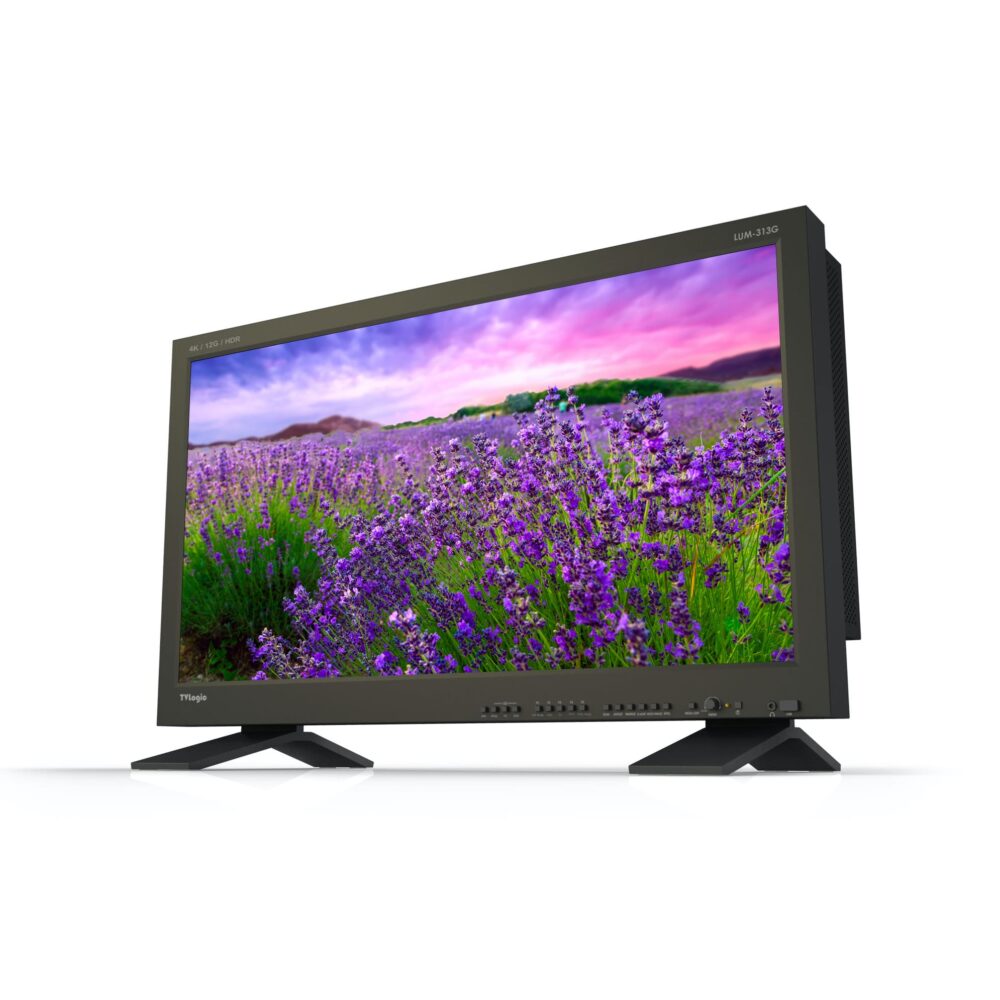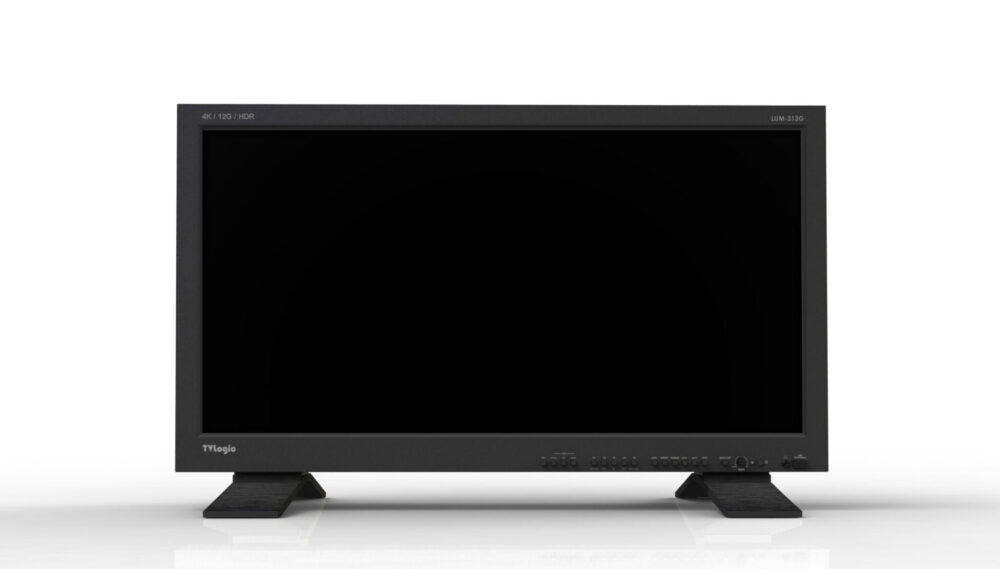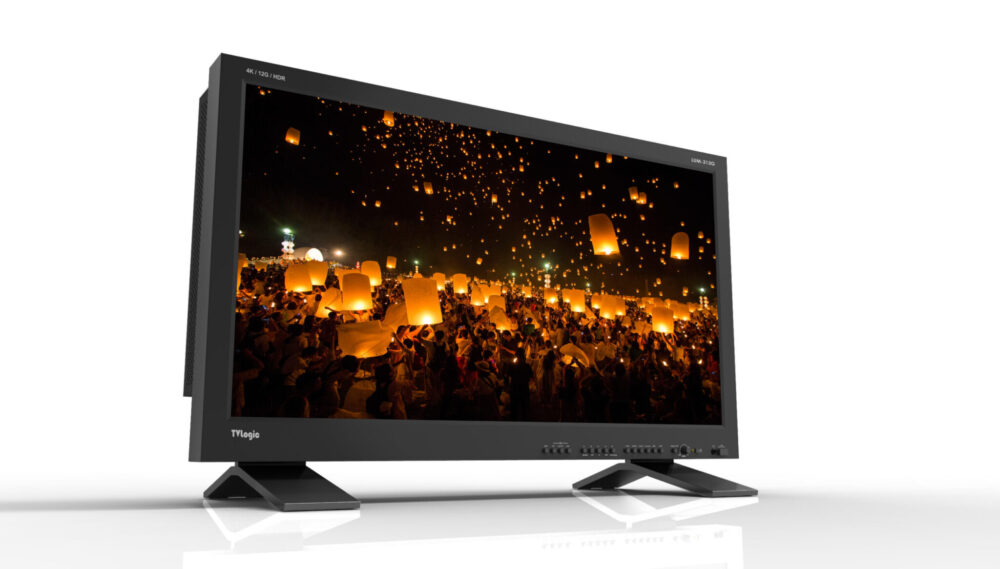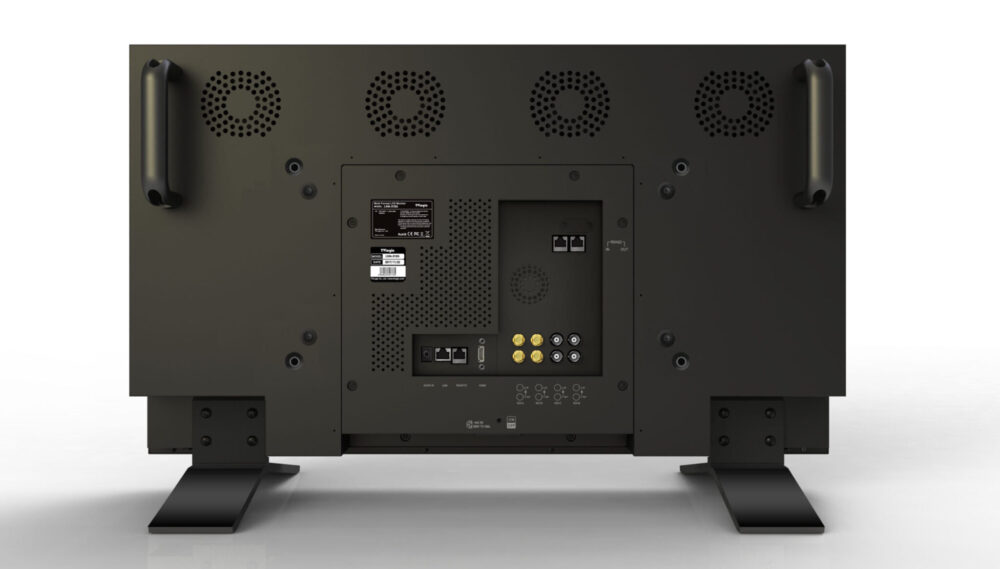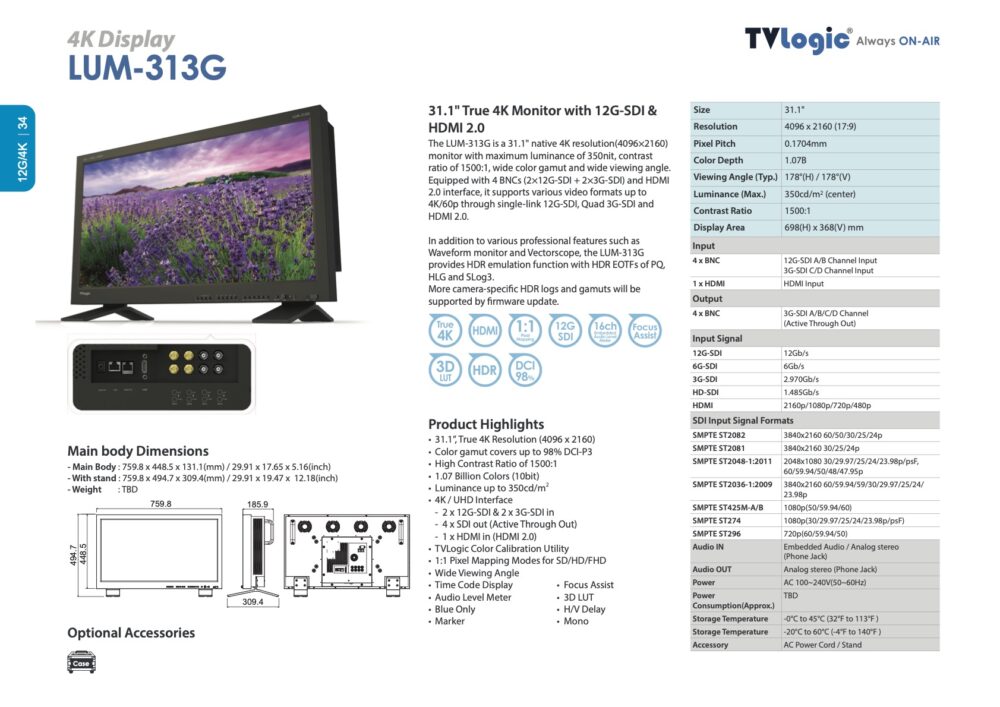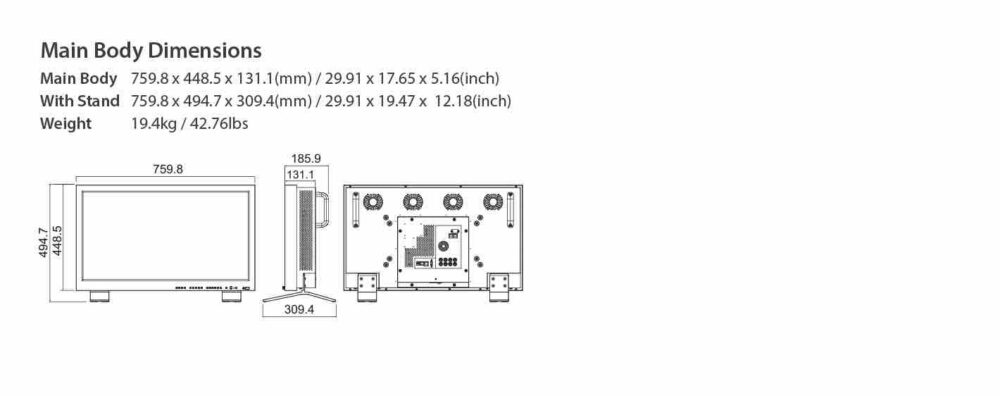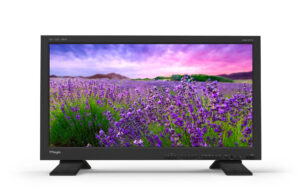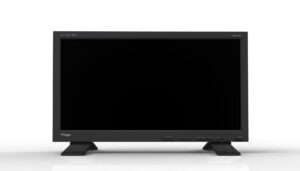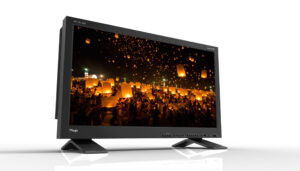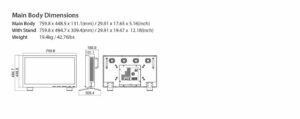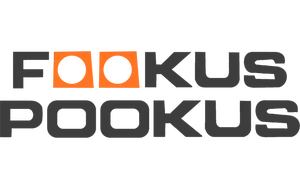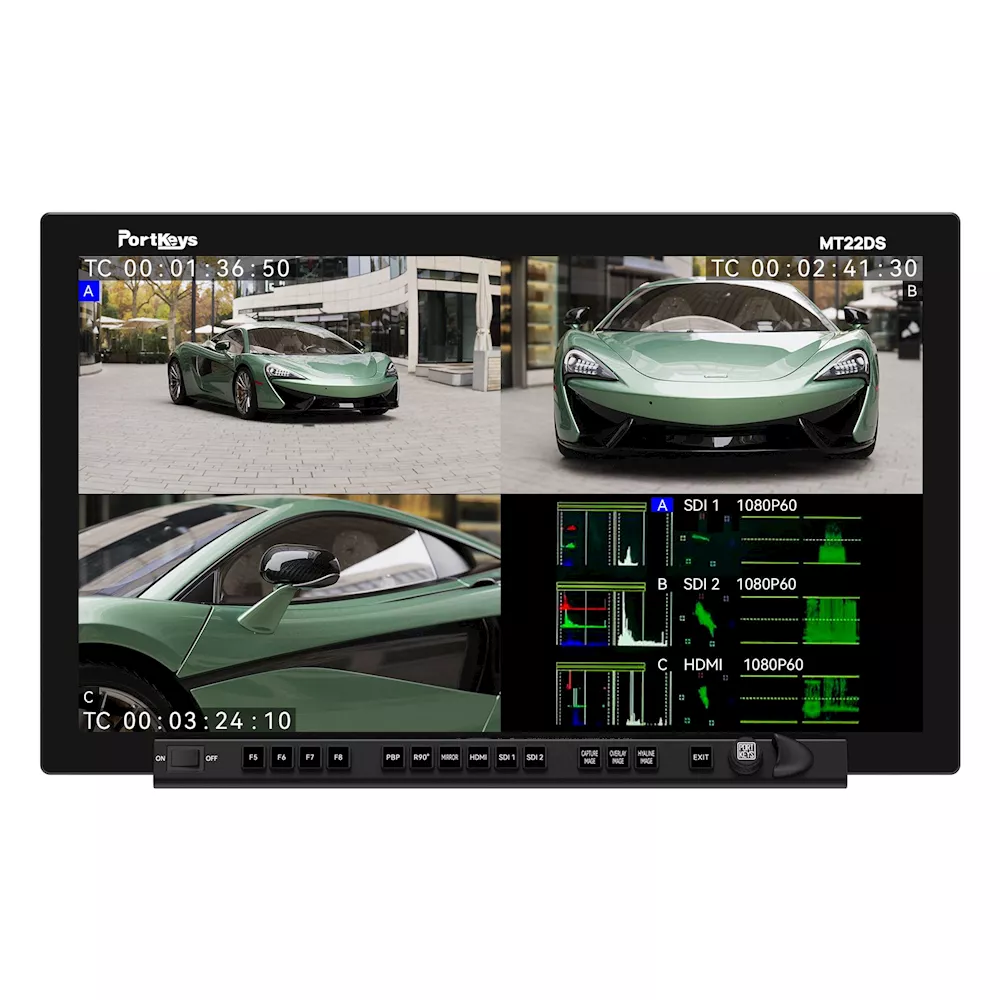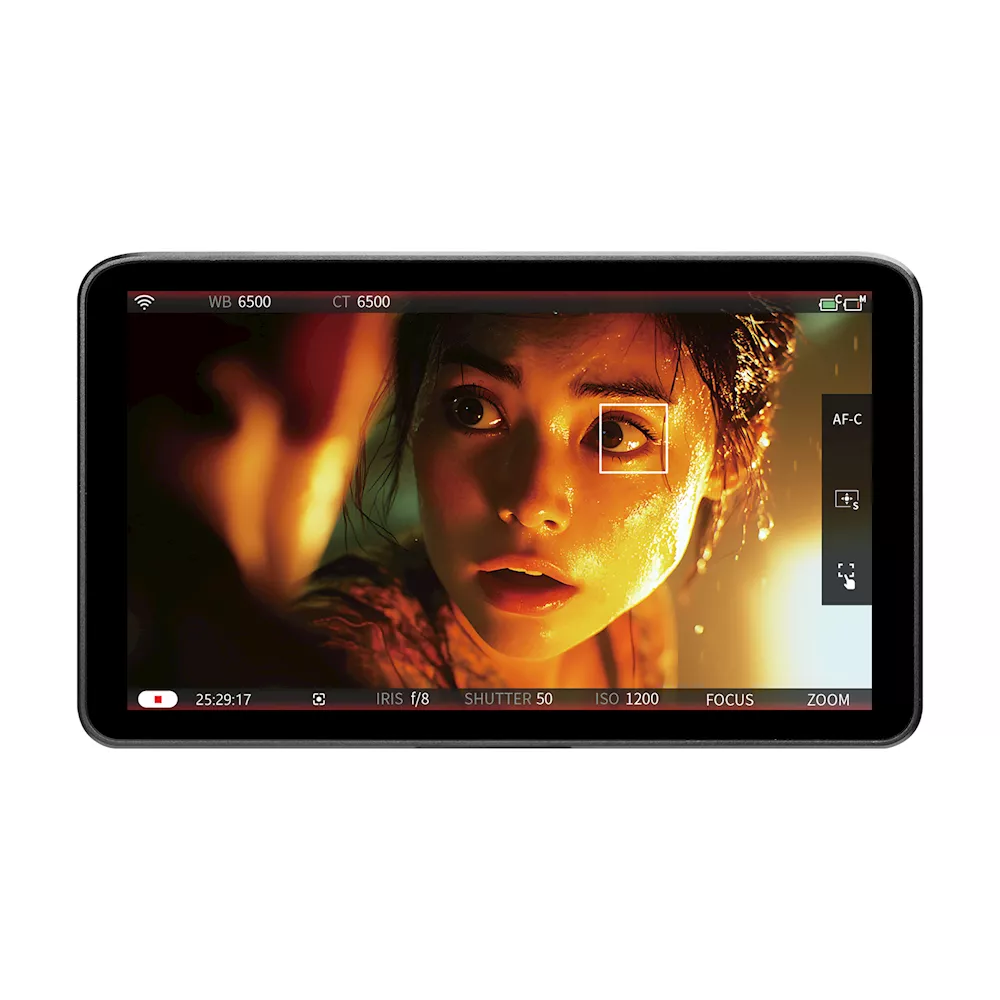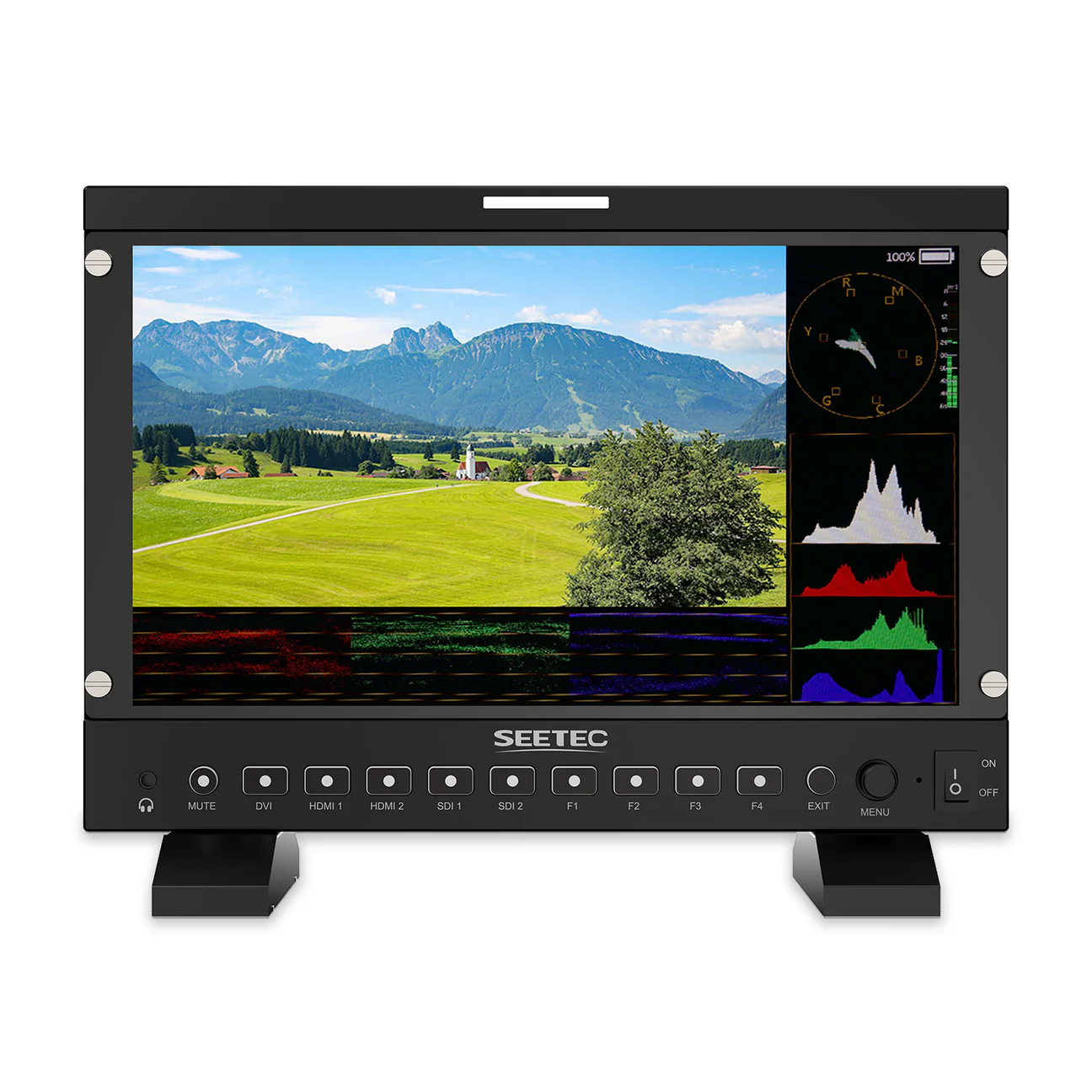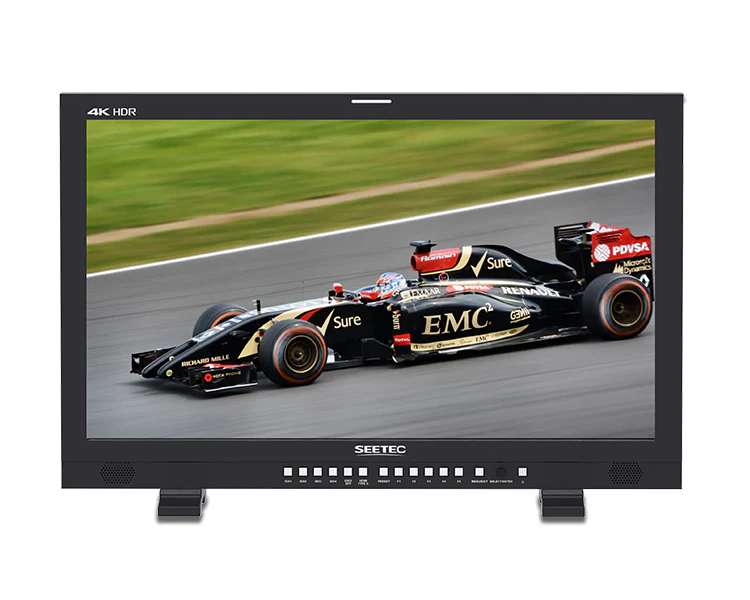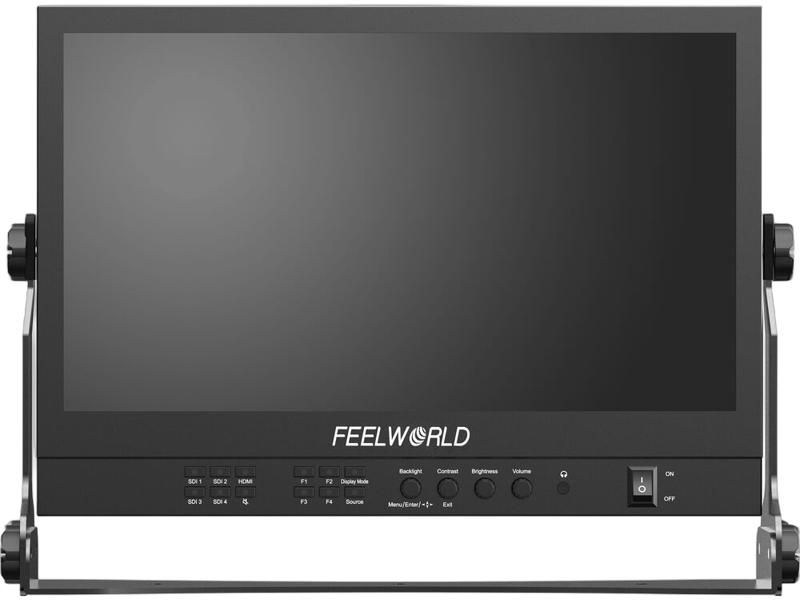Found a better price? Send us an email (info@mediagear.ee) or a link to a product from an e-shop in Estonia or the European Union and we'll do our best to make you a better offer!
31″ TVLOGIC LUM-313G DCI 4K 350nit LCD monitor
A professional 31″ 4K SDR monitor with HDR emulation function, is now innovated with a new color engine & video processor.
Ideal for 4K SDR Master: Upgraded with a new innovative color management and proprietary monitor calibration technology, LUM-313G-CI now perfectly meets all the color requirements for EBU Grade-1 (SDR) monitor specification, and also can perform HDR Emulation within 300nit capability.
ZERO Video Latency: Upgraded with an innovative DRC technology, now the internal video processing time is 2 ~ 4 times faster than before, and almost ZERO Video Latency (0.2-frame delay) for 4K/60p and 4K/50p video signals (12G-SDI only).
Features:
- HDR Emulation: A true HDR monitor must employ a special display panel with high dynamic range and a wide color gamut, along with being calibrated for PQ and HLG. For example, the LUM-310X (dual-layer LCD system) and LUM-310R (LCD with local dimming backlight system) are capable of reproducing a peak luminance of 1,000 nit and 2,000 nit respectively, and a contrast ratio of 1,000,000:1; in addition, they cover 99% of the DCI color gamut.
- Various 4K/UHD Input & Output Options: LUM-series monitors support various types of 4K/UHD video inputs.
- The new color processor – ‘LogiColor’ Engine: A whole new color management is introduced to LUM-series monitors (-CI version) starting with LUM-310X-CI for best color reproduction and control.
- LogiCAL Compatible: LUM-series monitors (-CI version) are now calibrated with a newly developed TVLogic calibration software – ‘LogiCAL’. This new software is provided for free to all TVLogic monitor users and now supports both PC and Mac computers. It performs SDR and HDR calibration to create and transmit 1D LUT and 3D LUT to the monitor. Once the calibration is completed, a professional-grade PDF report is automatically created with all detailed information on the calibration and the analysis on color reproduction. Please visit ”logiCAL’ page for more information.
- Zero Video Latency for 4K – ‘DRC’ technology: LUM-series monitors (-CI version) are upgraded for faster video processing. An innovative DRC (Dynamic RAM Control) technology was introduced to minimize the internal video delay according to the input video format. Now the internal video processing time is for 2 ~ 4 times faster for 4K/24p~30p and HD input, and about 200 times faster with almost ZERO latency (0.2-frame delay) for 4K/60p and 4K/50p video that is input through single link 12G-SDI. (This upgrade is available with firmware update. Please contact your local dealer or download from TVLogic website)
- SDR Super White: In SDR and HDR modes (HD, UHD, PQ, HLG), the default video range is ‘Narrow 100’ (64 ~ 940) while in DCI mode, ‘Full’ (4~1019). You can also choose ‘Narrow 109’ for SDR which enables to reproduce super white up to 120nit, which means you can confirm the highlight details above 100% without clipping if the input signal carries any information above 100%.
- PQ EETF: EETF (Electro-Electro Transfer Function) is useful when the display has limited luminance verses the peak luminance of the PQ contents. When the EETF is set to ‘ON’, the highlights over 1,000nit range are compressed into 900~1,000nit range LUM-310X-CI. This mode helps to confirm above monitor maximum brightness colors details. Of course, the monitor can not reproduce correct brightness, but under this setting, the detail of the very bright objects can be confirmed, shading or existence of clipping.
- HLG System Gamma (1.2 / Auto): HLG System Gamma varies according to the Peak Luminance of the display. If the HLG system gamma is set to ‘AUTO’, the system gamma will change according to the (clipping) luminance level. With the LUM-310X-CI, entering User mode will allow you to set the luminance level to ‘400 nit’ with a system gamma level of 1.2 to simulate how HLG will look in a monitor with a max luminance of 400 nit.
- Gamut Warning: When using the monitor in HDR mode of BT.2020 color space, colors that are outside of the monitor’s color gamut may be mapped onto the surface of the supported color scope with reduced saturation/brightness, while preserving the same color hue. Gamut warning function will show these mapped colors.
- Native Mode: In Native mode, the monitor will tentatively skip signal processing in order to reflect all the details in the signal. Color accuracy will be lost as this mode is used only for confirming the existence of the signal information.
- 3G-SDI Level A/B: Supports 3G-SDI Level A/B input.
- Audio Level Meter Display: Displays the level of the embedded sound signal together with the video signal input through the terminal such as SDI or HDMI.
- Blue Only / Mono: Red and Green channels are not used and only Blue or Monochrome channel is used to display the screen. This function is used to adjust the color tones (tones and saturation) of the screen using the SMPTE Color Bar. For example, after displaying the Blue channel, adjust the Color (or Saturation) and Tint (or Hue) so that the original Magenta and Cyan are of the same brightness, and the original Gray and Blue are of the same brightness.
- H/V Delay: Allows you to check the Blanking area and synchronize signals by displaying the horizontal and vertical intervals in the center of the screen.
- Key Lock: Key Lock is a password-protection function of the OSD menu so that non-authorized users cannot change the setting of the monitor.
- Marker: Displays various kinds of aspect ratios on the screen. Wide range of markers and security areas are available with line color and curtain transparency selection. A User Marker is available if any of standard markers fits your requirements.
- Range Error: Analyzes the input signal’s Luma (Y’) and chroma (C’) information. If the input signal exceeds the designated minimum and maximum values, the pixel will blink. This function allows for the user to easily identify any issues with exposure.
- Time Code Display: Displays the Timecode information on the screen.
- UMD: Displays user-customized 8 characters or source ID or Tally signal of Ancillary (ANC) data on the screen.
- Waveform/Vector Scope. Waveform Y: Displays the Luma(Y’), Cb, Cr component of the input signal into waveform.
Vector Scope: Displays the color components ‘B-Y’ and ‘R-Y’of the input signals onto the X-Y axis
Availability: Availability: CONTACT US While delivery is generally within 1-2 weeks, please contact us for an estimated delivery time.
